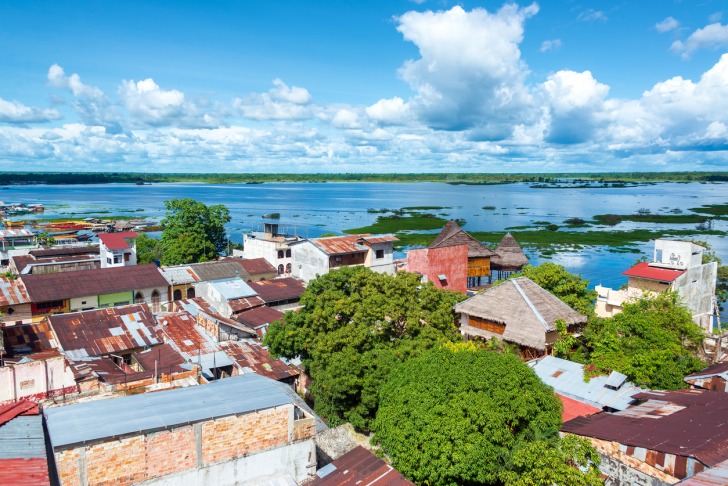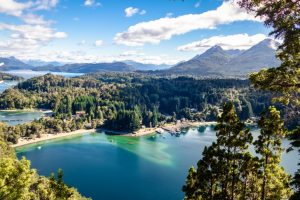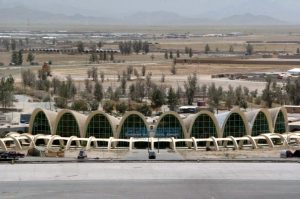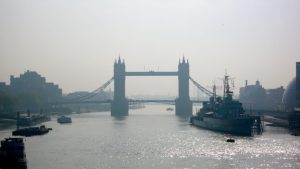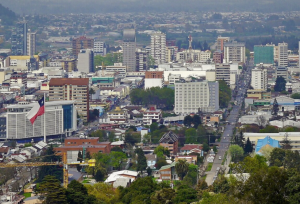Iquitos is the fifth-largest city in Peru and the largest city in the world that cannot be accessed by road.
It is the capital city of the Maynas Province of the Loreto region.
Iquitos is the largest city in the Amazon Rain Forest.
The Iquitos area was inhabited by indigenous groups until the rubber boom of the 19th century.
The rubber boom transformed Iquitos into a major shipping port and a place of grand architecture that travelers can still see remnants of today.
Travelers may assume that, because Iquitos is only accessible by air and by river, it is an isolated part of the Amazon Basin.
Iquitos is a thriving, vibrant place of adventure and rich history that dates back thousands of years.
Travelers are likely to wonder if there are any risks or safety issues, and how to avoid them.
Warnings & Dangers in Iquitos

OVERALL RISK: LOW
Crime does not occur as often in Iquitos, compared to many other areas of Peru. The crime that does occur is mostly minor offenses. Travelers usually appreciate the welcoming nature of the local inhabitants and generally feel safe while visiting Iquitos.

TRANSPORT & TAXIS RISK: LOW
Iquitos' residents and visitors rely heavily on public transportation to get to the city and to navigate the area. Mototaxi service is a mode of transport that is similar to rickshaw transportation in India. The three-wheeled vehicle has a bench seat in the back part of it where the customer sits while traveling to their nearby destination. Set the price with the driver before getting into the rickshaw-like mototaxi. Buses and boats are the other common forms of public transportation. Visitors to Iquitos likely do not want to use the other form of public transport, which is riding in the back of a pickup truck with other people.

PICKPOCKETS RISK: MEDIUM
Pickpocketing is one of the most common crimes committed in Iquitos. Some people commit pickpocket offenses in broad daylight, and in the presence of witnesses. The risk of any crime committed in Peru increases at night, including the pickpocket risk.

NATURAL DISASTERS RISK: MEDIUM
Researchers have sounded the alarm because of the effects of climate change in the Peruvian Amazon. People burn land before planting, destroying trees and native plants. Earthquakes are rare in Iquitos. Landslides and floods, such as the historic flooding that occurred in 2012, are a risk for Iquitos. The torrential downpours during the wet season have had a significant effect on the livelihood of local inhabitants. The inhabitants of Iquitos usually fish during the wetter months. Residents often farm during the dry months. Researchers indicate that the dry season has started becoming too prolonged or too hot, resulting in drought and smaller crop yields. The heat of the dry season may be too much for some travelers.

MUGGING RISK: MEDIUM
Most muggings occur in areas of Peru such as Cuzco or Lima. Travelers still need to be aware that muggings can occur in Iquitos. Armed criminals have started targeting travelers cruising the Amazon. Incidents of people being put in a choke hold and being mugged while traveling alone or walking alone have occurred in many areas of Peru.

TERRORISM RISK: MEDIUM
Terrorist groups once traumatized many people in Peru. The effects of the attacks and murders of innocent people are still felt throughout Peru, including in Iquitos. Much of the terrorist activities ceased a few decades ago, thanks to law enforcement efforts. Some sources indicate that terrorist activities have started again. The U.S. Department of State warns travelers not to travel to the Loreto region near the Columbia border because of increased criminal activity.

SCAMS RISK: MEDIUM
Violent crime occurs less often in Iquitos, compared to many other areas of Peru. One way that criminals do operate is to scam people, especially travelers. Credit card crime and money crime is an issue in Peru. Keep an eye on your credit card when you give it to a merchant or shopkeeper. Count your change if you use cash to pay for anything in Iquitos. Do not exchange currency on the streets to avoid scammers who may be exchanging counterfeit notes. Carefully inspect any ATM that you use to look for a skimmer. ATM fraud is a problem throughout Peru.

WOMEN TRAVELERS RISK: MEDIUM
Women who plan to travel alone to explore Iquitos need to be aware of risks to women travelers. Iquitos is generally safe for women, but it is important to avoid areas known for crime. Dressing more conservatively sometimes discourages the locals who make advances to women that they believe are traveling alone. Let them know that you are not interested in them or their advances. Go to a safe place, such as inside a shop or restaurant, if you feel unsafe. Some women traveling alone in Peru wear a ring so that they appear to be a married women.

TAP WATER RISK: HIGH
Drink bottled water when visiting Iquitos or anywhere else in Peru. Water-born parasites are known to be an issue in Peru. The U.S. Department of State recommends that travelers ask for bottled water when they are at a restaurant or hotel. Most restaurants and hotels in Peru serve tap water unless the staff is specifically asked for bottled water.
Safest Places to Visit in Iquitos
Explore the enchantment of the Amazon when you take a scenic Amazon cruise.
The sights, the sounds, and the comfortable accommodation on your boat will take you on an unforgettable journey.
Take a boat to the Al Frio y Al Fuego.
Enjoy exotic cuisine at the only restaurant that floats down the Amazon River.
Visit the Indigenous Culture Museum Amazonicas.
Learn about the way of life of 40 native tribes of the Amazon.
Book a tour that includes birding.
Toucan, macaws, hoatzin, Amazon parrots, and laughing falcon are a few of the estimated 1,500 species of birds in the Amazon rainforest.
Visit the Tamshiyacu Tahuayo Reserve.
Catch a glimpse of the uakari monkeys, who are named for a tribe and language that is now extinct.
See howler monkeys, anteaters, and squirrel monkeys.
Travelers can also see poisonous dart frogs and pigmy monkeys.
Enjoy an unforgettable experience when you brave the Canopy Zip Line.
The cable system supports over 12,000 pounds.
The scientists, construction team, and other specialists wanted to ensure the safety of Iquitos visitors who try the zip line.
Visit the Mercado de Belen with a friend and experience indigenous food options.
Buy exotic spices, beads, and unique items.
Places to Avoid in Iquitos
Iquitos does not have much violent crime.
Tourists still need to take precautions and avoid some places.
Stay away from isolated areas.
Do not let anyone offer to take you anywhere in Iquitos if you do not know them.
Eat at well-known restaurants to avoid any food or water-borne issues.
Hold on to your purse and wallet, even at popular restaurants and destinations.
Do not go anyplace where there is a demonstration taking place.
Avoid areas where people seem to have a conflict.
Safety Tips for Traveling to Iquitos
- Do your research before booking your trip. Check the U.S. Department of State site for travel updates before booking your trip. Some areas of Peru have elevated travel warnings, while others warn U.S. citizens not to travel to the area.
- Make copies of your passport and other documents. Pickpockets and mugging are reasons to avoid carrying your actual passport, travel documents, and driver’s license. Make copies of them in case of theft.
- Do not hail public transport on the street. Check with your hotel or tour operator for safe public transport companies. Some criminals pretend to be a legitimate public transport service, only to rob unsuspecting tourists.
- Travel only on reputable roads. Members of organized criminal groups are known to set up roadblocks and rob victims on some roads.
- Dress Casually. Dress casually while on your Iquitos trip. Avoid clothing and shoes that make you look like a tourist.
- Save the jewels for the red carpet. You may want to show off your expensive jewelry or a designer purse. Criminals want you to wear them too. Leave the expensive jewelry and handbags at home.
- Reconsider participating in some ceremonies. It may seem exciting to participate in ceremonies where local plants or herbs are a part of the ceremony. Some U.S. travelers have reported health issues, sexual assaults, thefts, or injuries when under the influence of these substances.
- Keep your purse safe when dining and shopping. Do not put your purse on the back of a restaurant chair or on a tabletop. Avoid carrying a purse in your hand.
- Do not leave drinks unattended. Do not risk drink spiking. Always keep your drink with you.
- Be aware of your surroundings. Stay aware of your surroundings, whether you explore the Amazon jungle or visit the local markets. Do not pick up anything that someone drops in front of you. It is a common ploy to snatch purses or bags.
So... How Safe Is Iquitos Really?
Iquitos is a safe area in Peru.
The risk of violent crime is much lower than in many other parts of Peru.
The crimes that occur are usually minor crimes of opportunity.
The areas of Peru that are dangerous may make some travelers reconsider visiting Iquitos.
Although it is an awe-inspiring, isolated city that is safer than most of Peru, the warnings are for the entire country.
Get a view of the jungle while dining at a nice restaurant or while eating ice cream made with local exotic fruits.
Do not take in the view too long, or you may discover that your drink is spiked or that your purse or wallet are gone.
There is very little government presence in some areas and the U.S. government has limited ability to provide emergency services along the border of Columbia.
Most travelers who visit Iquitos have a great time with no safety issues.
Follow safety guidelines and stay alert to changing political or economic issues that may lead to protests or demonstrations.
How Does Iquitos Compare?
| City | Safety Index |
|---|---|
| Iquitos | 71 |
| Lima | 53 |
| Cusco | 52 |
| Arequipa | 32 |
| Ayacucho | 44 |
| Puno | 45 |
| Calgary (Canada) | 82 |
| Buenos Aires (Argentina) | 60 |
| Vancouver (Canada) | 82 |
| Cordoba (Argentina) | 61 |
| Toronto (Canada) | 81 |
| Melbourne (Australia) | 80 |
Useful Information

Visas
U.S. citizens visiting Peru are not required to have a visa. The Migraciones, or immigration authorities, provide a passport stamp that allows up to 183 days' stay for tourism. The country usually does not extend the stay.

Currency
The Peruvian sol, or neuvo sol, is the currency of Peru. Exchange currency at banks or at exchange houses. Do not use street changers to avoid getting fake currency and to guard against theft.

Weather
Weather often has a role in when some people travel to Iquitos. The daily high temperature stays around 90 degrees Fahrenheit year-round. The nighttime low temperature averages around 70 degrees Fahrenheit.

Airports
Iquitos International Airport is also known as the Coronel FAP Francisco Secada Vignetta International Airport. It is four miles southeast of Iquitos city center. Flights from Lima depart daily to Iquitos. Take public transport from the airport to your destination.

Travel Insurance
Buying travel insurance is a smart idea to protect your belongings and yourself in case of unforeseen circumstances. It covers things like financial losses and medical emergencies. Check to see if there is a waiting period for claims before you buy your travel insurance.
Iquitos Weather Averages (Temperatures)
Average High/Low Temperature
| Temperature / Month | Jan | Feb | Mar | Apr | May | Jun | Jul | Aug | Sep | Oct | Nov | Dec |
|---|---|---|---|---|---|---|---|---|---|---|---|---|
| High °C | 32 | 32 | 32 | 32 | 31 | 31 | 31 | 32 | 32 | 32 | 32 | 32 |
| Low °C | 22 | 22 | 22 | 22 | 21 | 21 | 20 | 21 | 21 | 21 | 22 | 22 |
| High °F | 90 | 90 | 90 | 90 | 88 | 88 | 88 | 90 | 90 | 90 | 90 | 90 |
| Low °F | 72 | 72 | 72 | 72 | 70 | 70 | 68 | 70 | 70 | 70 | 72 | 72 |
Peru - Safety by City
| City | Safety Index |
|---|---|
| Arequipa | 32 |
| Ayacucho | 44 |
| Cusco | 52 |
| Iquitos | 71 |
| Lima | 53 |
| Puno | 45 |
